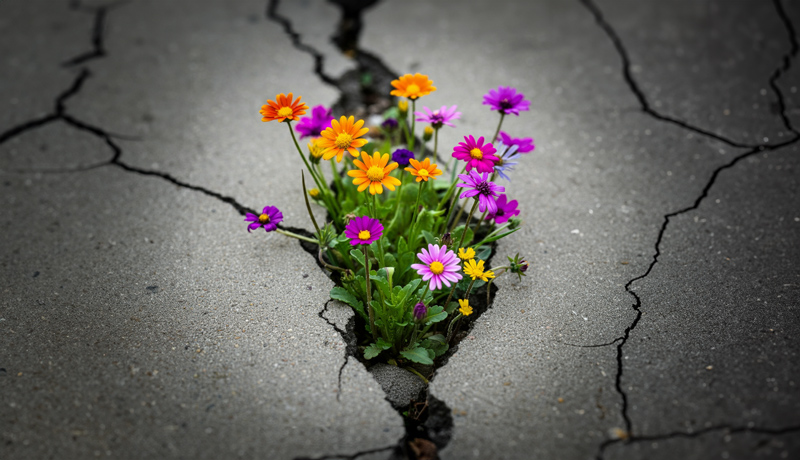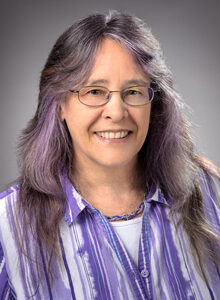I could say ‘Adversity’ was my middle name, but I’d be lying… it’s Rae. Still, like so many other autistic people, adversity has been part of my life for as long as I can remember.

Research has validated that claim by saying autistic people have an increased risk of experiencing adverse events, trauma, interpersonal violence, and the results of those experiences, such as PTSD, anxiety, and thwarted belonging (Lobregt-van Buuren et al., 2021; Bhargav & Swords, 2022).
Autistic people have been bullied in school, at work, and even at home (Humphrey & Hebron, 2015; Praslova et al., n.d.). They’ve been rejected, ostracized, discriminated against, and have felt the utter unfairness of prejudice. Most have had numerous friendships that have ended without warning or reason. They have been misunderstood, invalidated, and unintentionally harmed by well-meaning support people and professionals, although we need to remember that unintentional harm is still harm.
Why, after decades of living with adversity, do autistic people keep going? How do I, and many other autistic people, become resilient, knowing each new day will most likely bring some kind of adversity? Where does the resilience come from?
The Resilience Theory was developed to understand and describe people who have gone through difficult, traumatic experiences and then thrive as they move toward health, healing, and happiness (Van Breda, 2018). They are determined to find a way to take care of themselves so they feel safe, joyful, and productive. They have the ability to not only overcome negative experiences but also become stronger because of them (Ledesma, 2014).
I know many autistic people who have a background of trauma live with PTSD, and yet they are resilient. They keep moving forward, doing great things in their jobs, homes, communities, and even around the world. I believe there are three distinct areas that help autistic people to be resilient in spite of the adverse experiences they have endured. They all fall into the overall category of self-care.
The first one is a sense of awe and wonderment. Autistic people, with their fascination with facts, attention to detail, and creative curiosity, can use the sense of awe and wonder to take care of themselves. In order to be awestruck, one has to be able to focus on something interesting in great detail until everything else falls away (The Awe of the Autistic Mind, n.d.).
The idea is to get to a place where the overwhelm, the sensory stimulation, the countless thoughts, and the anxiety – are displaced by a sense of wonder and awe, even if it’s just for a little while. It could be a flower, especially the flowers that have grown up straight and tall within a crack in a rock or cement. It could be the immensity of a tall building, the sound and sight of waves crashing onto the shore, a song, the vast blue sky, or a meaningful poem.
The second is creating an inner world. Autistic people have rich inner worlds. Many autistic people can lose themselves in a place they create in their minds that feels safe, joyful, and perfect for them. Over 200 autistic people were surveyed, and 90% of them reported an inner world they used for self-care (Exploring the Inner Worlds of Autistic Minds, 2021). Autistic people who use their inner worlds create the types of places that make them content. They can have more than one inner world; they can create characters, design their world exactly how they want it, and then escape into it for self-care.
And the third is the ability to recognize and use their unique strengths. Autism is typically looked upon as a deficit-based neurological developmental disorder, but it’s so much more than that. Autistic people can use their unique ways of being as strengths. For instance, focused passions can bring joy, excitement, and even awe to an autistic person’s life. Being involved in a focused passion can make an autistic person feel empowered, happy, and accomplished. If it can be their life’s work, they might be the most knowledgeable, content, and focused person in their workplace.
There are other strengths as well, such as honesty, fairness, attention to detail, creativity, and problem-solving. These strengths can be used by autistic people to come up with unique ways to take care of themselves and be ok in a world that’s not made for them, filled with people who do not understand them, and support that is not recognized as support.
Overcoming adversity builds resilience and makes a person stronger for the next adversity that comes their way. Using self-care as described above helps to build resilience and take care of oneself at the same time. A sense of awe and wonderment, rich inner worlds that are safe and a place to just “be” for a while, and using autistic strengths are as beneficial to autistic people as the world we live in is harsh. The result is resilience.
To that end, I guess I could also say “Resilience” is my middle name… but alas, it’s still Rae.
Lisa Morgan, MSW, MEd, is a Consultant at Lisa Morgan Consulting LLC. She can be reached by email at lisamorganconsulting@gmail.com or via text at (603) 370-7207.
References
Bhargav, M., & Swords, L. (2022). Role of thwarted belongingness, perceived burdensomeness, and psychological distress in the association between adverse childhood experiences and suicidal ideation in college students. BJPsych Open, 8(2). https://doi.org/10.1192/bjo.2021.1087
Ella Lobregt-van Buuren, M. S. C., Marjolijn Hoekert, P. H. D., & Bram Sizoo, P. H. D. (2021). Autism, Adverse Events, and Trauma. Exon Publications, 33–42. https://doi.org/10.36255/exonpublications.autismspectrumdisorders.2021.trauma
Exploring the Inner Worlds of Autistic Minds. (2021, February 12). NeuroClastic. https://neuroclastic.com/exploring-the-inner-worlds-of-autistics/
Humphrey, N., & Hebron, J. (2015). Bullying of children and adolescents with autism spectrum conditions: a “state of the field” review. International Journal of Inclusive Education, 19(8), 845–862. https://doi.org/10.1080/13603116.2014.981602
Ledesma, J. (2014). Conceptual Frameworks and Research Models on Resilience in Leadership. SAGE Open, 4(3). https://doi.org/10.1177/2158244014545464
Praslova, L., Ph.D., & SHRM-SCP. (n.d.). Workplace bullying of autistic people: a Vicious cycle. Specialisterne USA. https://us.specialisterne.com/workplace-bullying-of-autistic-people-a-vicious-cycle/
The Awe of the Autistic Mind. (n.d.). Functional Legacy Mindset. https://functionallegacymindset.com.au/the-awe-of-the-autistic-mind/
Van Breda, A. (2018). A Critical Review of Resilience Theory and Its Relevance for Social Work. Social Work, 54(1). https://doi.org/10.15270/54-1-611






